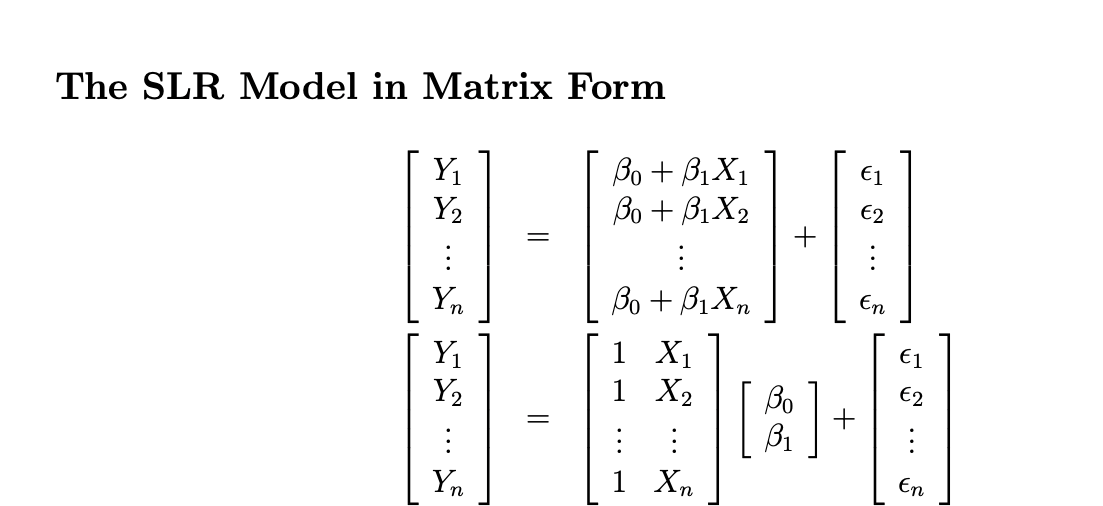STA 326 2.0 Programming and Data Analysis with R
⚒️ 🗜️ Writing functions in R
Dr Thiyanga Talagala
Today's menu
- User-written functions

Functions in R
👉🏻 Perform a specific task according to a set of instructions.
Functions in R
👉🏻 Perform a specific task according to a set of instructions. 👉🏻 Some functions we have discussed so far,
c,matrix,array,list,data.frame,str,dim,length,nrow,plot
Functions in R
👉🏻 Perform a specific task according to a set of instructions. 👉🏻 Some functions we have discussed so far,
c,matrix,array,list,data.frame,str,dim,length,nrow,plot
👉🏻 In R, functions are objects of class function.
class(length)[1] "function"Functions in R (cont.)
👉🏻 There are basically two types of functions:
💻 Built-in functions
Already created or defined in the programming framework to make our work easier.👨 User-defined functions
Sometimes we need to create our own functions for a specific purpose.Syntax
name <- function(arg1, aug2, ...){<FUNCTION BODY>return(value)}Example
cal_power <- function(x){a <- x^2; b <- x^3out <- c(a, b)names(out) <- c("squared", "cubed")out # or return(out)}Evaluation
cal_power(2)squared cubed 4 8Syntax
name <- function(arg1, aug2, ...){<FUNCTION BODY>return(value)}Example
cal_power <- function(x){a <- x^2; b <- x^3out <- c(a, b)names(out) <- c("squared", "cubed")out # or return(out)}Evaluation
cal_power(2)squared cubed 4 8👉 Functions are created using the function()
Basic components of a function
1. Function name
Syntax
name <- function(arg1, aug2, ...){<FUNCTION BODY>return(value)}Example
cal_power <- function(x){a <- x^2b <- x^3out <- c(a, b)names(out) <- c("squared", "cubed")out # or return(out)}Function name: cal_power
Function name: cal_power
use verbs, where possible
should be meaningful
use an underscore (_) to separate words
avoid names of built-in functions
start with lower case letters. Note that R is a case sensitive language
Basic components of a function
- Function name
2. Function arguments/ inputs
Syntax
name <- function(arg1, aug2, ...){<FUNCTION BODY>return(value)}Example
cal_power <- function(x){ a <- x^2 b <- x^3 out <- c(a, b) names(out) <- c("squared", "cubed") out # or return(out)}Function arguments: x
- value passed to the function to obtain the function's result.
Basic components of a function
Function name
Function arguments/ inputs
3. Function body
Syntax
name <- function(arg1, aug2, ...){<FUNCTION BODY>return(value)}Example
cal_power <- function(x){ a <- x^2 b <- x^3 out <- c(a, b) names(out) <- c("squared", "cubed") out # or return(out)}Function body
Function with single line
Mathod 1
cal_sqrt <- function(x){x^2}Method 2
cal_sqrt <- function(x) x^2Function body (Cont.)
Place spaces around all operators such as =, +, -, <-, etc.
Exception: Do not place spaces around the operators :, :: and :::
1+2 # bad1 + 2 # goodFunction body (Cont.)
Place spaces around all operators such as =, +, -, <-, etc.
Exception: Do not place spaces around the operators :, :: and :::
1+2 # bad1 + 2 # good- Place a space before left parentheses except evaluating the function (function call)
if (a > 2) # goodif(a>2) # bad# Function call ----rnorm(2) # goodrnorm (2) # badFunction body (Cont.)
- Use extra spacing to align multiple lines with <- or =
# Bad ------a = sum(c(1, 5, 8, 10))/2sd = sd(c(1, 5, 8, 10))# Good ------a = sum(c(1, 5, 8, 10))/2sd = sd(c(1, 5, 8, 10))Function body (Cont.)
- Spacing inside parentheses or square brackets
# Good ---a[1, 2]a[1, ]if(x < 2)# Bad ---a[1,2]a[1,]if(x<2)if( x<2 )Function body (Cont.)
- {} do not go in one single line, always two lines
# Good ---if(y == 2){print("even")}# Bad ---if(y == 2){ print("even")}Load the mozzie dataset
library(mozzie)data(mozzie); head(mozzie, 2) ID Year Week Colombo Gampaha Kalutara Kandy Matale Nuwara Eliya Galle1 1 2008 52 15 7 1 11 4 0 02 2 2009 1 44 23 5 16 21 2 0 Hambantota Matara Jaffna Kilinochchi Mannar Vavuniya Mulative Batticalo1 6 22 0 0 8 0 0 12 5 18 1 0 0 0 0 0 Ampara Trincomalee Kurunagala Puttalam Anuradhapura Polonnaruwa Badulla1 0 0 2 1 2 0 12 1 1 10 5 0 0 1 Monaragala Ratnapura Kegalle1 1 2 162 0 1 25Load the mozzie dataset
library(mozzie)data(mozzie); head(mozzie, 2) ID Year Week Colombo Gampaha Kalutara Kandy Matale Nuwara Eliya Galle1 1 2008 52 15 7 1 11 4 0 02 2 2009 1 44 23 5 16 21 2 0 Hambantota Matara Jaffna Kilinochchi Mannar Vavuniya Mulative Batticalo1 6 22 0 0 8 0 0 12 5 18 1 0 0 0 0 0 Ampara Trincomalee Kurunagala Puttalam Anuradhapura Polonnaruwa Badulla1 0 0 2 1 2 0 12 1 1 10 5 0 0 1 Monaragala Ratnapura Kegalle1 1 2 162 0 1 25Use Min-Max transformation to rescale all the districts variables onto 0-1 range.
Min-Max transformation is xi−min(x)max(x)−min(x) where x=(x1,x2,...xn).
Min-Max transformation on mozzie
minmax.colombo <- (mozzie$Colombo - min(mozzie$Colombo, na.rm = TRUE)) / (max(mozzie$Colombo, na.rm=TRUE) - min(mozzie$Colombo, na.rm=TRUE))head(minmax.colombo) # Colombo district[1] 0.03157895 0.09263158 0.08210526 0.12000000 0.11157895 0.06105263 Min-Max transformation on mozzie
minmax.colombo <- (mozzie$Colombo - min(mozzie$Colombo, na.rm = TRUE)) / (max(mozzie$Colombo, na.rm=TRUE) - min(mozzie$Colombo, na.rm=TRUE))head(minmax.colombo) # Colombo district[1] 0.03157895 0.09263158 0.08210526 0.12000000 0.11157895 0.06105263minmax.gampaha <- (mozzie$Gampaha - min(mozzie$Gampaha, na.rm = TRUE)) / (max(mozzie$Gampaha, na.rm = TRUE) - min(mozzie$Gampaha, na.rm = TRUE)) head(minmax.gampaha) # Gampaha district[1] 0.02734375 0.08984375 0.07421875 0.08984375 0.09375000 0.06640625 Min-Max transformation on mozzie
minmax.colombo <- (mozzie$Colombo - min(mozzie$Colombo, na.rm = TRUE)) / (max(mozzie$Colombo, na.rm=TRUE) - min(mozzie$Colombo, na.rm=TRUE))head(minmax.colombo) # Colombo district[1] 0.03157895 0.09263158 0.08210526 0.12000000 0.11157895 0.06105263minmax.gampaha <- (mozzie$Gampaha - min(mozzie$Gampaha, na.rm = TRUE)) / (max(mozzie$Gampaha, na.rm = TRUE) - min(mozzie$Gampaha, na.rm = TRUE)) head(minmax.gampaha) # Gampaha district[1] 0.02734375 0.08984375 0.07421875 0.08984375 0.09375000 0.06640625minmax.kalutara <- (mozzie$Gampaha - min(mozzie$Kalutara, na.rm = TRUE)) / (max(mozzie$Kalutara, na.rm = TRUE) - min(mozzie$Kalutara, na.rm = TRUE))head(minmax.kalutara) # Kalutara district[1] 0.09333333 0.30666667 0.25333333 0.30666667 0.32000000 0.22666667Copying-and-pasting
You could easily make errors.
A mistake copied becomes a mistake repeated.
Copying-and-pasting
You could easily make errors.
A mistake copied becomes a mistake repeated.
When should you write a function?
Whenever you need to copy and paste a block of codes many times
- A function is a reusable block of programming code designed to do a specific task.
If you don't find a suitable built-in function to serve your purpose, you can write your own function
To share your work with others
Writing a function
Step 1: Function name
rescale_minmaxWriting a function
Step 1: Function name
rescale_minmaxStep 2: Assign your function to the name
rescale_minmax <-Writing a function
Step 1: Function name
rescale_minmaxStep 2: Assign your function to the name
rescale_minmax <-Step 3: Tell R that you are writing a function
rescale_minmax <- function(x) # Arguments/inputs should be defined inside ()Step 4: Curly braces define the start and the end of your work
rescale_minmax <- function(x){# Task# output}Step 5: Function inputs, task and outputs
Find all the inputs that correspond to a given function output?
# Colombo district(mozzie$Colombo - min(mozzie$Colombo, na.rm = TRUE)) / (max(mozzie$Colombo, na.rm=TRUE) - min(mozzie$Colombo, na.rm=TRUE))Step 5: Function inputs, task and outputs
Find all the inputs that correspond to a given function output?
# Colombo district(mozzie$Colombo - min(mozzie$Colombo, na.rm = TRUE)) / (max(mozzie$Colombo, na.rm=TRUE) - min(mozzie$Colombo, na.rm=TRUE))Re-write the code with general names
x <- mozzie$Colombo(x - min(x, na.rm = TRUE)) / (max(x, na.rm=TRUE) - min(x, na.rm=TRUE))Step 5: Function inputs, task and outputs
Find all the inputs that correspond to a given function output?
# Colombo district(mozzie$Colombo - min(mozzie$Colombo, na.rm = TRUE)) / (max(mozzie$Colombo, na.rm=TRUE) - min(mozzie$Colombo, na.rm=TRUE))Re-write the code with general names
x <- mozzie$Colombo(x - min(x, na.rm = TRUE)) / (max(x, na.rm=TRUE) - min(x, na.rm=TRUE))Remove duplication/ Make your code efficient and readable
rng <- range(x, na.rm = TRUE)rng[1] 0 475rng <- range(x, na.rm = TRUE)(x - rng[1]) / (rng[2] - rng[1])Step 6: Complete your function
Type A
rescale_minmax <- function(x){ rng <- range(x, na.rm = TRUE) (x - rng[1]) / (rng[2] - rng[1])}Type B
rescale_minmax <- function(x){ rng <- range(x, na.rm = TRUE) out.rescaled <- (x - rng[1]) / (rng[2] - rng[1]) out.rescaled}Step 6: Complete your function
Type A
rescale_minmax <- function(x){ rng <- range(x, na.rm = TRUE) (x - rng[1]) / (rng[2] - rng[1])}Type B
rescale_minmax <- function(x){ rng <- range(x, na.rm = TRUE) out.rescaled <- (x - rng[1]) / (rng[2] - rng[1]) out.rescaled}Type C
rescale_minmax <- function(x){ rng <- range(x, na.rm = TRUE) out.rescaled <- (x - rng[1]) / (rng[2] - rng[1]) return(out.rescaled)}In this situation Type A is the best.
Step 7: Check your function with a few different inputs
rescale_minmax <- function(x){ rng <- range(x, na.rm = TRUE) (x - rng[1]) / (rng[2] - rng[1])}Step 7: Check your function with a few different inputs
rescale_minmax <- function(x){ rng <- range(x, na.rm = TRUE) (x - rng[1]) / (rng[2] - rng[1])}rescale_minmax(c(1, 200, 250, 80, NA))[1] 0.0000000 0.7991968 1.0000000 0.3172691 NABack to our original example
minmax.colombo <- rescale_minmax(mozzie$Colombo)head(minmax.colombo)[1] 0.03157895 0.09263158 0.08210526 0.12000000 0.11157895 0.06105263Back to our original example
minmax.colombo <- rescale_minmax(mozzie$Colombo)head(minmax.colombo)[1] 0.03157895 0.09263158 0.08210526 0.12000000 0.11157895 0.06105263minmax.gampaha <- rescale_minmax(mozzie$Gampaha)head(minmax.gampaha)[1] 0.02734375 0.08984375 0.07421875 0.08984375 0.09375000 0.06640625minmax.kalutara <- rescale_minmax(mozzie$Kalutara)head(minmax.kalutara)[1] 0.01333333 0.06666667 0.14666667 0.16000000 0.25333333 0.13333333Move forward: When the requirements changes
new.data.col <- c(400, 500, 350, 250, 60, 70, Inf)rescale_minmax(new.data.col)[1] 0 0 0 0 0 0 NaNMove forward: When the requirements changes
new.data.col <- c(400, 500, 350, 250, 60, 70, Inf)rescale_minmax(new.data.col)[1] 0 0 0 0 0 0 NaNFix the code
rescale_minmax <- function(x){ rng <- range(x, na.rm = TRUE, finite=TRUE) (x - rng[1]) / (rng[2] - rng[1])}new.data.col <- c(400, 500, 350, 250, 60, 70, Inf)rescale_minmax(new.data.col)[1] 0.77272727 1.00000000 0.65909091 0.43181818 0.00000000 0.02272727 InfYour turn
Rewrite rescale_minmax so that -Inf is set to 0, and Inf is mapped to 1.
04:00
Your turn
R for Data Science - Exercise 19.2.1, Question 3
05:00
Your turn
R for Data Science - Exercise 19.2.1, Question 4
10:00
Functions are for humans and computers
Descriptive names for variables.
Comment your code.
Your turn
Write your own function to calculate parameter estimates of simple linear regression model.
Help: ^β=(XTX)−1XTY

05:00
Write a function to calculate confidence intervals for mean. ¯x±tα/2,(n−1)s√(n)
10:00
Function arguments
cal_mean_ci <- function(x, conf){ len.x <- length(x) se <- sd(x) / sqrt(len.x) alpha <- 1-conf mean(x) + se * qt(c(alpha / 2, 1 - alpha / 2), df = len.x-1)}data <- c(165, 170, 175, 180, 185)cal_mean_ci(data, 0.95)[1] 165.1838 184.8162Function with default values
cal_mean_ci <- function(x, conf = 0.95){ len.x <- length(x) se <- sd(x) / sqrt(len.x) alpha <- 1-conf mean(x) + se * qt(c(alpha / 2, 1 - alpha / 2), df = len.x-1)}cal_mean_ci(data)[1] 165.1838 184.8162cal_mean_ci(data, 0.99)[1] 158.7221 191.2779In-class questions
Problem 1
Write a function to calculate the correlation coefficient
r=∑ni=1(xi−¯x)(yi−¯y)√∑ni=1(xi−¯x)2∑ni=1(yi−¯y)2
Do not use the function cor inside your function.
08:00
Problem 2
Write a function to generate 100 random numbers from a normal distribution and plot the distribution of the random numbers. Your function should display the generated random numbers and the corresponding plot.
10:00
Problem 3
Write a function to compute z-score value of a A/L Mathematics student given the marks of the student. Assume
mean(Mathematics) = 60, sd(Mathematics) = 10,
mean(Chemistry) = 45, sd(Chemistry) = 20,
mean(Physics) = 55, sd(Physics) = 5.
05:00
Local variables vs Global variables
in-class discussion using R Demo
Problem 4
Write a function to calculate the median.
help:
5%%2[1] 14%%2[1] 0Note: Do not use the built-in function median inside your function.
08:00